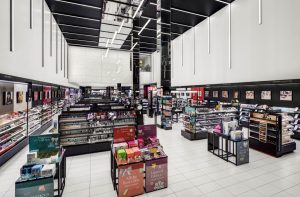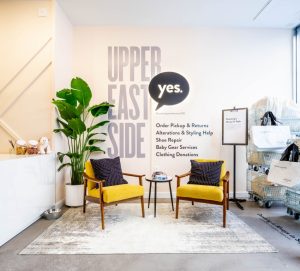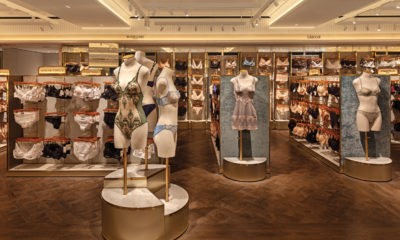IT’S OFFICIALLY 2020. We’re peering into a new decade, but it feels sometimes like we’re peering into a brave – and uncertain – new world.
Exactly where will retailers go in the coming decade? The possibilities are starting right now.
The Data Drive
We know that American retailers have been accumulating vast amounts of information about their shoppers. They now have the ability to target marketing promotions and micro-personalize the shopping experience across all platforms.
They’re just not doing it the right way.
“American retailers are struggling with data,” says Raj Shroff, Founder and Principal of retail consultancy Pine (Columbus, Ohio). “They collect tons of it, but they don’t know how to use it. It’s easy to fall into the ‘let’s gather more insights’ way of thinking. But too many haven’t figured out how to use all that information to make stores more personal and less generic.”
Shroff says he’s impressed with the multi-channel personalization efforts of Sephora. And he’s not alone. This past year, the Paris-based beauty company was the top vote-getter in the annual Retail Personalization Index conducted by Sailthru Inc. (New York), with a score of 79 out of 100. It was the third year in a row that Sephora has topped this particular index. WWD called its loyalty program “ridiculously sophisticated.”
“[Sephora] . . . continues to provide a great digital-to-store experience, using digital channels to encourage customers to book makeovers and fashion consultations,” said a WWD article about the beauty behemoth. “And its loyalty program is well-orchestrated across every channel. Profile details, from first name to buying habits to answers to quizzes, are also well-used across channels. Every communication from the brand, on every platform, displays the customer’s loyalty points.”
Reexamining Formats
“A lot of retailers are closing stores, and people see that as a death knell,” says Carol Spieckerman, a Bentonville, Ark.-based retail consultant at Spieckerman Retail, “but that’s not necessarily so. Many retailers are closing stores because they can. They have the data to determine which markets they can address purely digitally and in which ones they would benefit from building a physical store.”
She says the Nordstrom Local initiative reflects today’s “all-of-the-above” world.
“Retailers can’t let their store presence atrophy while they chase digital,” she says. “Bricks-and-mortar is still the best way to drive brand awareness. Pop-ups, smaller footprints, concierge-type stores – all are ways to keep retail brands in consumers’ minds.”
Nordstrom Local, a recent concept from the Seattle-based department store operator, is putting a new spin on the age-old question, “How do I get more people into my store?” According to Richard Kestenbaum, Co-Founder of Triangle Capital LLC (New York), writing in Forbes, “Nordstrom Local turns that legacy on its head [focusing not] on bringing people to the store, [but] asking, ‘How do I get more of my store to where the people are?’
“Instead of trying to entice consumers to go to a specific place,” Kestenbaum writes in the same Forbes article, “it motivates retailers to be where the customers are when they’re in the mood to spend: out socializing with friends, on vacation, at an entertainment venue, or walking around their local neighborhood.”
It’s a retail space with no inventory, “about the size of a Starbucks,” continues Kestenbaum, “and it provides services. You can get fitted, get styling guidance, get alterations from on-site tailors, do pickups and returns or get help ordering online.”
Most of all, says Spieckerman, it imprints the Nordstrom brand on people who’ve had no previous Nordstrom experience.
Postcards from Asia
Shroff says he went to China this summer “to fully immerse myself into what they’re doing.” What he found was a country where “apps control everything” and shoppers seem eager to play.
Kevin O’Donnell, Co-Founder of Thread Collaborative (Los Angeles), concurs. “Technology has been fully integrated into Asian stores,” says the retail consultant, who does a lot of work, mostly in grocery, in the Pacific Rim. “Asia has been quicker to develop free WiFi throughout all its cities, which makes acceptance of tech apps and strategies easier for consumers. The U.S. is getting better, but not to the extent of Tokyo or Seoul [South Korea].”
In 2018, Singapore-based honestbee Pte Ltd., which delivers online orders of meals and groceries, opened Habitat, described by the company as “the world’s first tech-integrated multisensory grocery and dining destination.”
The store, says O’Donnell, features an automated cashless checkout experience and robotic collection points.
Machine automation also figures prominently in the expanding Hema chain of app-driven superstores in China, from Alibaba Group Holding Ltd. (Hangzhou, China), the multinational conglomerate specializing in e-commerce, retail, Internet and technology, where robots deliver meals to the table and the distribution-center portion of the store aggregates orders and delivers them to the shopper’s home, often in as little as 30 minutes.
In South Korea, E-Mart Traders, a warehouse-style supermarket developed by Seoul-based retail giant Shinsegae, experimented with robotic carts that follow shoppers around or, if provided with a shopping list, gather the items themselves. The experimentation was ultimately discontinued but, as O’Donnell says, “it shows a willingness to experiment we don’t often see in the U.S.”
The Day of the Un-Merchant
But maybe we will in 2020. “Remember when we said, about financially trained CEOs, ‘Well, he isn’t a merchant!’?” asks Spieckerman. “Today, being an un-merchant is a badge of honor. Those merchant-driven sensibilities that have driven retail for decades are not the lens through which retail will operate going forward. Non-merchants will be breaking those legacy structures and legacy executives.
“Today, merchants’ biggest problem is that they are, after all, merchants in the traditional way. It’s a new world, calling for a multi-platform perspective,” she says.
PHOTO GALLERY ( 7 IMAGES)


 Photo Gallery2 days ago
Photo Gallery2 days ago
 Headlines1 week ago
Headlines1 week ago
 Headlines2 weeks ago
Headlines2 weeks ago
 Sector Spotlight2 weeks ago
Sector Spotlight2 weeks ago
 Headlines1 week ago
Headlines1 week ago
 Headlines4 days ago
Headlines4 days ago
 Headlines2 weeks ago
Headlines2 weeks ago
 Designer Dozen1 week ago
Designer Dozen1 week ago



























